Juncheng Liu
Serving Large Language Models on Huawei CloudMatrix384
Jun 15, 2025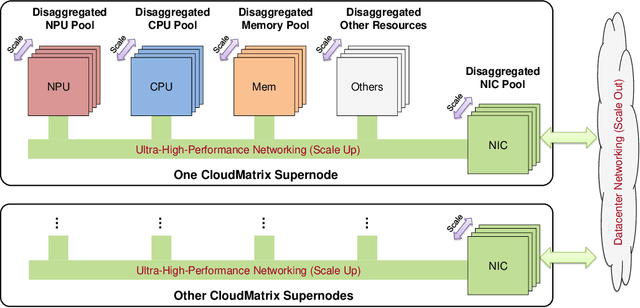

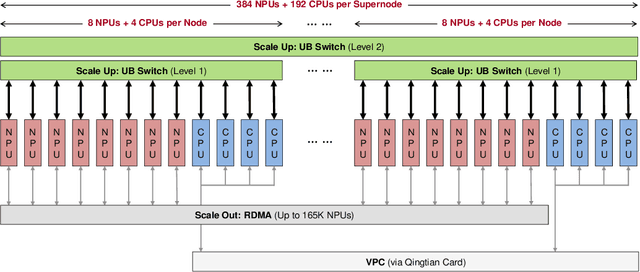
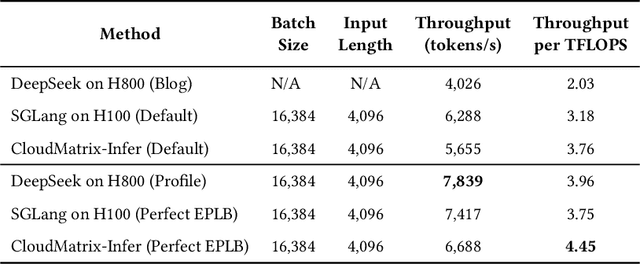
Abstract:The rapid evolution of large language models (LLMs), driven by growing parameter scales, adoption of mixture-of-experts (MoE) architectures, and expanding context lengths, imposes unprecedented demands on AI infrastructure. Traditional AI clusters face limitations in compute intensity, memory bandwidth, inter-chip communication, and latency, compounded by variable workloads and strict service-level objectives. Addressing these issues requires fundamentally redesigned hardware-software integration. This paper introduces Huawei CloudMatrix, a next-generation AI datacenter architecture, realized in the production-grade CloudMatrix384 supernode. It integrates 384 Ascend 910C NPUs and 192 Kunpeng CPUs interconnected via an ultra-high-bandwidth Unified Bus (UB) network, enabling direct all-to-all communication and dynamic pooling of resources. These features optimize performance for communication-intensive operations, such as large-scale MoE expert parallelism and distributed key-value cache access. To fully leverage CloudMatrix384, we propose CloudMatrix-Infer, an advanced LLM serving solution incorporating three core innovations: a peer-to-peer serving architecture that independently scales prefill, decode, and caching; a large-scale expert parallelism strategy supporting EP320 via efficient UB-based token dispatch; and hardware-aware optimizations including specialized operators, microbatch-based pipelining, and INT8 quantization. Evaluation with the DeepSeek-R1 model shows CloudMatrix-Infer achieves state-of-the-art efficiency: prefill throughput of 6,688 tokens/s per NPU and decode throughput of 1,943 tokens/s per NPU (<50 ms TPOT). It effectively balances throughput and latency, sustaining 538 tokens/s even under stringent 15 ms latency constraints, while INT8 quantization maintains model accuracy across benchmarks.
Empowering Time Series Analysis with Synthetic Data: A Survey and Outlook in the Era of Foundation Models
Mar 14, 2025



Abstract:Time series analysis is crucial for understanding dynamics of complex systems. Recent advances in foundation models have led to task-agnostic Time Series Foundation Models (TSFMs) and Large Language Model-based Time Series Models (TSLLMs), enabling generalized learning and integrating contextual information. However, their success depends on large, diverse, and high-quality datasets, which are challenging to build due to regulatory, diversity, quality, and quantity constraints. Synthetic data emerge as a viable solution, addressing these challenges by offering scalable, unbiased, and high-quality alternatives. This survey provides a comprehensive review of synthetic data for TSFMs and TSLLMs, analyzing data generation strategies, their role in model pretraining, fine-tuning, and evaluation, and identifying future research directions.
Moirai-MoE: Empowering Time Series Foundation Models with Sparse Mixture of Experts
Oct 14, 2024



Abstract:Time series foundation models have demonstrated impressive performance as zero-shot forecasters. However, achieving effectively unified training on time series remains an open challenge. Existing approaches introduce some level of model specialization to account for the highly heterogeneous nature of time series data. For instance, Moirai pursues unified training by employing multiple input/output projection layers, each tailored to handle time series at a specific frequency. Similarly, TimesFM maintains a frequency embedding dictionary for this purpose. We identify two major drawbacks to this human-imposed frequency-level model specialization: (1) Frequency is not a reliable indicator of the underlying patterns in time series. For example, time series with different frequencies can display similar patterns, while those with the same frequency may exhibit varied patterns. (2) Non-stationarity is an inherent property of real-world time series, leading to varied distributions even within a short context window of a single time series. Frequency-level specialization is too coarse-grained to capture this level of diversity. To address these limitations, this paper introduces Moirai-MoE, using a single input/output projection layer while delegating the modeling of diverse time series patterns to the sparse mixture of experts (MoE) within Transformers. With these designs, Moirai-MoE reduces reliance on human-defined heuristics and enables automatic token-level specialization. Extensive experiments on 39 datasets demonstrate the superiority of Moirai-MoE over existing foundation models in both in-distribution and zero-shot scenarios. Furthermore, this study conducts comprehensive model analyses to explore the inner workings of time series MoE foundation models and provides valuable insights for future research.
GIFT-Eval: A Benchmark For General Time Series Forecasting Model Evaluation
Oct 14, 2024



Abstract:Time series foundation models excel in zero-shot forecasting, handling diverse tasks without explicit training. However, the advancement of these models has been hindered by the lack of comprehensive benchmarks. To address this gap, we introduce the General Time Series Forecasting Model Evaluation, GIFT-Eval, a pioneering benchmark aimed at promoting evaluation across diverse datasets. GIFT-Eval encompasses 28 datasets over 144,000 time series and 177 million data points, spanning seven domains, 10 frequencies, multivariate inputs, and prediction lengths ranging from short to long-term forecasts. To facilitate the effective pretraining and evaluation of foundation models, we also provide a non-leaking pretraining dataset containing approximately 230 billion data points. Additionally, we provide a comprehensive analysis of 17 baselines, which includes statistical models, deep learning models, and foundation models. We discuss each model in the context of various benchmark characteristics and offer a qualitative analysis that spans both deep learning and foundation models. We believe the insights from this analysis, along with access to this new standard zero-shot time series forecasting benchmark, will guide future developments in time series foundation models. The codebase, datasets, and a leaderboard showing all the results in detail will be available soon.
UniTST: Effectively Modeling Inter-Series and Intra-Series Dependencies for Multivariate Time Series Forecasting
Jun 07, 2024



Abstract:Transformer-based models have emerged as powerful tools for multivariate time series forecasting (MTSF). However, existing Transformer models often fall short of capturing both intricate dependencies across variate and temporal dimensions in MTS data. Some recent models are proposed to separately capture variate and temporal dependencies through either two sequential or parallel attention mechanisms. However, these methods cannot directly and explicitly learn the intricate inter-series and intra-series dependencies. In this work, we first demonstrate that these dependencies are very important as they usually exist in real-world data. To directly model these dependencies, we propose a transformer-based model UniTST containing a unified attention mechanism on the flattened patch tokens. Additionally, we add a dispatcher module which reduces the complexity and makes the model feasible for a potentially large number of variates. Although our proposed model employs a simple architecture, it offers compelling performance as shown in our extensive experiments on several datasets for time series forecasting.
MGNNI: Multiscale Graph Neural Networks with Implicit Layers
Oct 15, 2022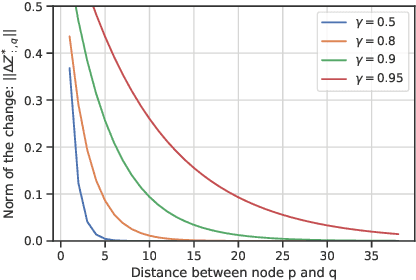
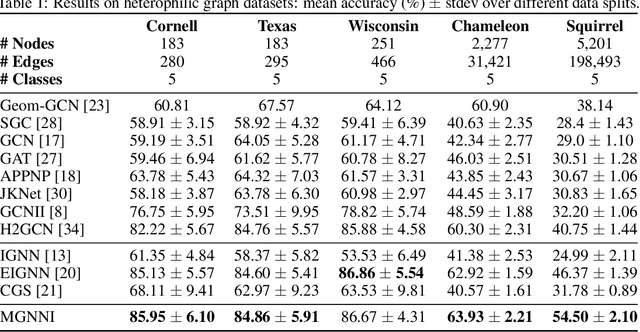
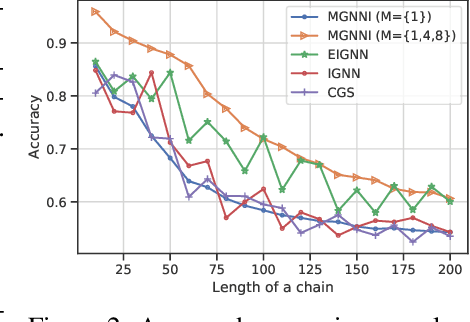
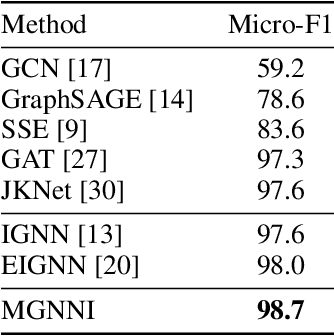
Abstract:Recently, implicit graph neural networks (GNNs) have been proposed to capture long-range dependencies in underlying graphs. In this paper, we introduce and justify two weaknesses of implicit GNNs: the constrained expressiveness due to their limited effective range for capturing long-range dependencies, and their lack of ability to capture multiscale information on graphs at multiple resolutions. To show the limited effective range of previous implicit GNNs, We first provide a theoretical analysis and point out the intrinsic relationship between the effective range and the convergence of iterative equations used in these models. To mitigate the mentioned weaknesses, we propose a multiscale graph neural network with implicit layers (MGNNI) which is able to model multiscale structures on graphs and has an expanded effective range for capturing long-range dependencies. We conduct comprehensive experiments for both node classification and graph classification to show that MGNNI outperforms representative baselines and has a better ability for multiscale modeling and capturing of long-range dependencies.
Should We Rely on Entity Mentions for Relation Extraction? Debiasing Relation Extraction with Counterfactual Analysis
May 08, 2022
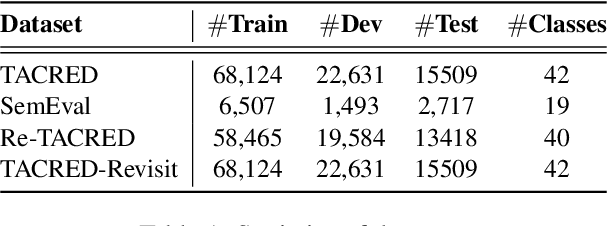
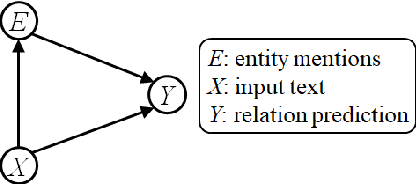
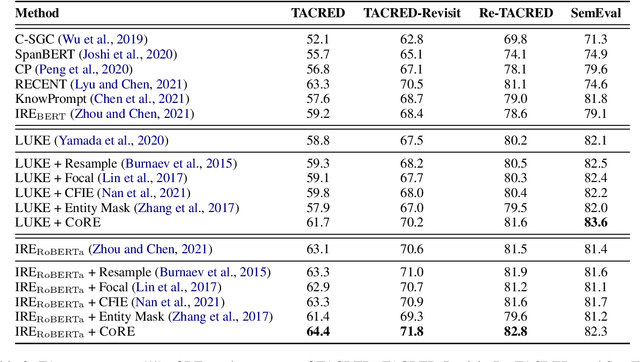
Abstract:Recent literature focuses on utilizing the entity information in the sentence-level relation extraction (RE), but this risks leaking superficial and spurious clues of relations. As a result, RE still suffers from unintended entity bias, i.e., the spurious correlation between entity mentions (names) and relations. Entity bias can mislead the RE models to extract the relations that do not exist in the text. To combat this issue, some previous work masks the entity mentions to prevent the RE models from overfitting entity mentions. However, this strategy degrades the RE performance because it loses the semantic information of entities. In this paper, we propose the CORE (Counterfactual Analysis based Relation Extraction) debiasing method that guides the RE models to focus on the main effects of textual context without losing the entity information. We first construct a causal graph for RE, which models the dependencies between variables in RE models. Then, we propose to conduct counterfactual analysis on our causal graph to distill and mitigate the entity bias, that captures the causal effects of specific entity mentions in each instance. Note that our CORE method is model-agnostic to debias existing RE systems during inference without changing their training processes. Extensive experimental results demonstrate that our CORE yields significant gains on both effectiveness and generalization for RE. The source code is provided at: https://github.com/vanoracai/CoRE.
Dangling-Aware Entity Alignment with Mixed High-Order Proximities
May 05, 2022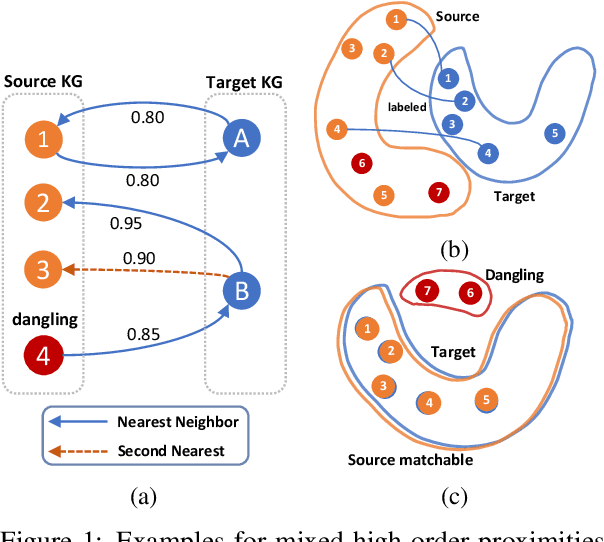

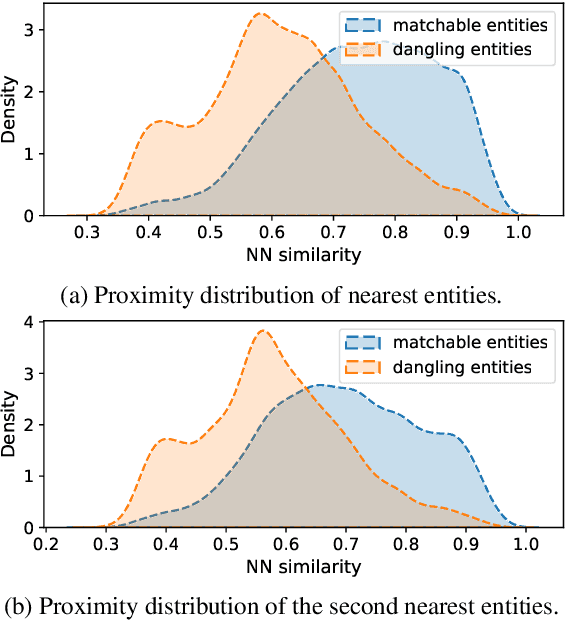

Abstract:We study dangling-aware entity alignment in knowledge graphs (KGs), which is an underexplored but important problem. As different KGs are naturally constructed by different sets of entities, a KG commonly contains some dangling entities that cannot find counterparts in other KGs. Therefore, dangling-aware entity alignment is more realistic than the conventional entity alignment where prior studies simply ignore dangling entities. We propose a framework using mixed high-order proximities on dangling-aware entity alignment. Our framework utilizes both the local high-order proximity in a nearest neighbor subgraph and the global high-order proximity in an embedding space for both dangling detection and entity alignment. Extensive experiments with two evaluation settings shows that our framework more precisely detects dangling entities, and better aligns matchable entities. Further investigations demonstrate that our framework can mitigate the hubness problem on dangling-aware entity alignment.
EIGNN: Efficient Infinite-Depth Graph Neural Networks
Feb 22, 2022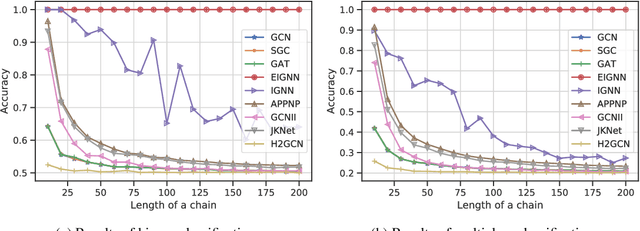
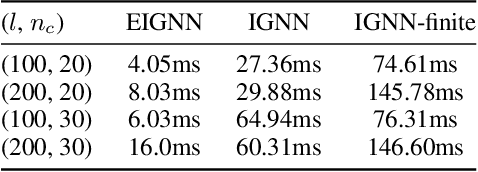
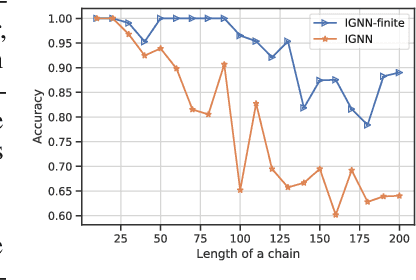
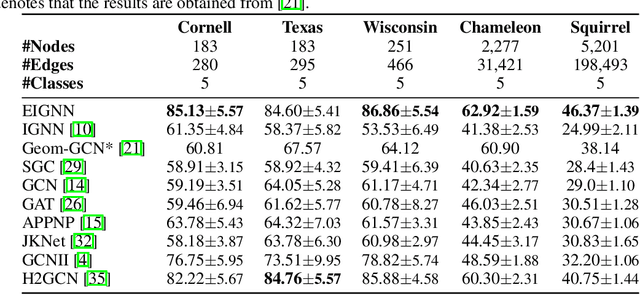
Abstract:Graph neural networks (GNNs) are widely used for modelling graph-structured data in numerous applications. However, with their inherently finite aggregation layers, existing GNN models may not be able to effectively capture long-range dependencies in the underlying graphs. Motivated by this limitation, we propose a GNN model with infinite depth, which we call Efficient Infinite-Depth Graph Neural Networks (EIGNN), to efficiently capture very long-range dependencies. We theoretically derive a closed-form solution of EIGNN which makes training an infinite-depth GNN model tractable. We then further show that we can achieve more efficient computation for training EIGNN by using eigendecomposition. The empirical results of comprehensive experiments on synthetic and real-world datasets show that EIGNN has a better ability to capture long-range dependencies than recent baselines, and consistently achieves state-of-the-art performance. Furthermore, we show that our model is also more robust against both noise and adversarial perturbations on node features.
OneFlow: Redesign the Distributed Deep Learning Framework from Scratch
Oct 29, 2021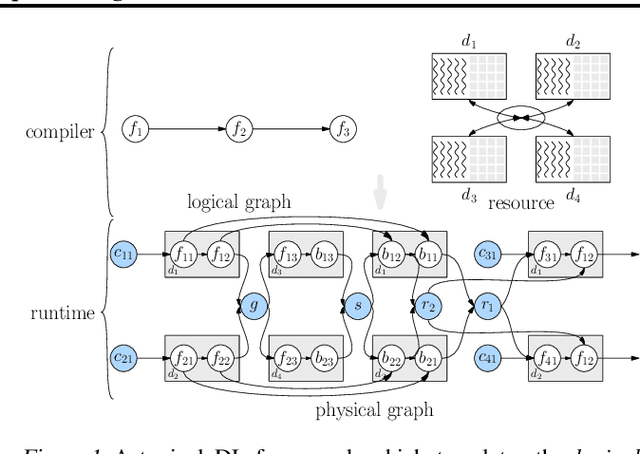
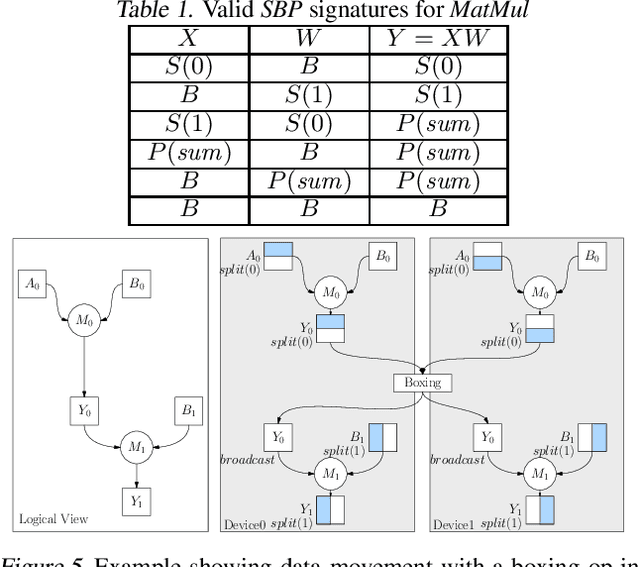

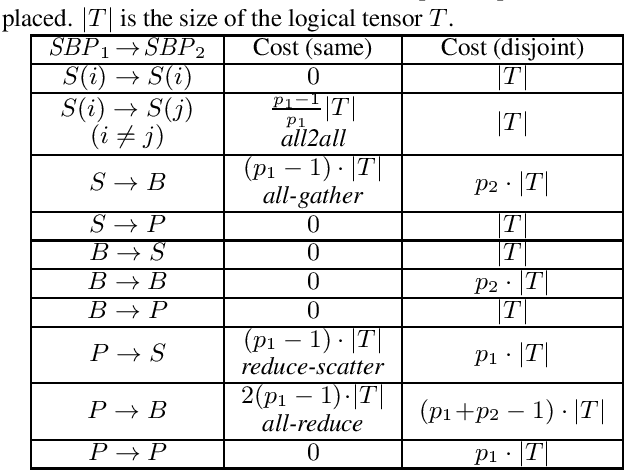
Abstract:Deep learning frameworks such as TensorFlow and PyTorch provide a productive interface for expressing and training a deep neural network (DNN) model on a single device or using data parallelism. Still, they may not be flexible or efficient enough in training emerging large models on distributed devices, which require more sophisticated parallelism beyond data parallelism. Plugins or wrappers have been developed to strengthen these frameworks for model or pipeline parallelism, but they complicate the usage and implementation of distributed deep learning. Aiming at a simple, neat redesign of distributed deep learning frameworks for various parallelism paradigms, we present OneFlow, a novel distributed training framework based on an SBP (split, broadcast and partial-value) abstraction and the actor model. SBP enables much easier programming of data parallelism and model parallelism than existing frameworks, and the actor model provides a succinct runtime mechanism to manage the complex dependencies imposed by resource constraints, data movement and computation in distributed deep learning. We demonstrate the general applicability and efficiency of OneFlow for training various large DNN models with case studies and extensive experiments. The results show that OneFlow outperforms many well-known customized libraries built on top of the state-of-the-art frameworks. The code of OneFlow is available at: https://github.com/Oneflow-Inc/oneflow.
 Add to Chrome
Add to Chrome Add to Firefox
Add to Firefox Add to Edge
Add to Edge